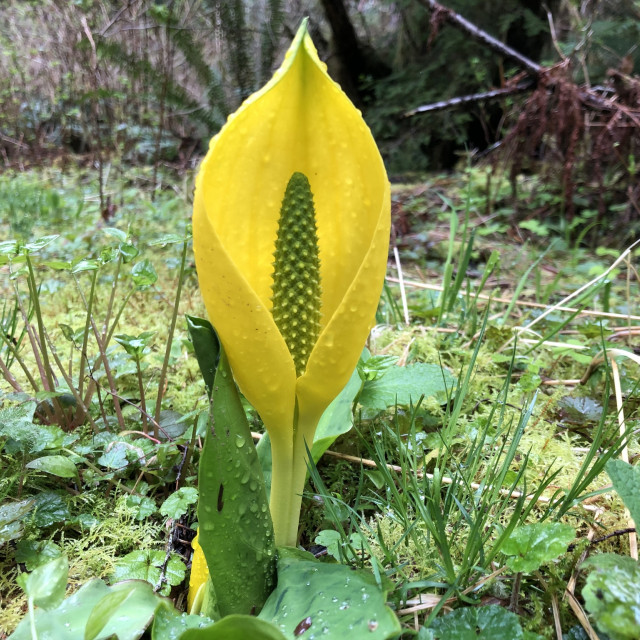COMMON NAME
Western skunk cabbage
SCIENTIFIC NAME
Lysichiton americanus
ALSO KNOWN AS
Swamp lantern, yellow skunk cabbage, American skunkcabbage
Plant family
Arum (Araceae)
Plant group
Wildflowers and Herbs
A robust wetland plant reaching 3' tall or more. The yellow flower emerges first, followed by the large leaves. The stems remain buried in the soil.
22 reports
15+
OBSERVERS
22+
OBSERVATIONS
Identification hints
This is one of the first flowers to bloom in late winter or early spring.
Did you know?
The fleshy underground stem is a known food source of bears and other animals. The skunk cabbage gets its name from the foul odor produced by the leaves when crushed.
DISTRIBUTION IN TH U.S.
Alaska
,
California
,
Idaho
,
Montana
,
Oregon
,
Washington
,
Wyoming
HABITAT
Growing in swamps, bogs and wet muddy soils
ATTRIBUTES
Leaves
Leaves are 12-59" long and 4-27" wide, bright green with a somewhat waxy appearance and prominent venation. The leaves emerge from the soil, without an above ground stem.
Flowers
Up to 7-12" long, a bright yellow sheath (spathe) covers a greenish knob-like cluster of tiny flowers (spadix) inside. These flowers are held on a 12-20" stalk and emerge from the soil before the leaves.
Fruits
Fruit is a geometrically patterned sphere, 2" in diameter and containing several spongy berry-like fleshy red fruits, each with a single seed.
Bloom Time
Blooming in late winter to early spring.
See Menu
- 2021 Chicago Botanic Garden. All Rights Reserved.
-
Creative Commons
BY-NC-SA 4.0 - Terms of Use
- Privacy Policy
- Data Sharing and Citation Policies
- 2021 Chicago Botanic Garden. All Rights Reserved.



